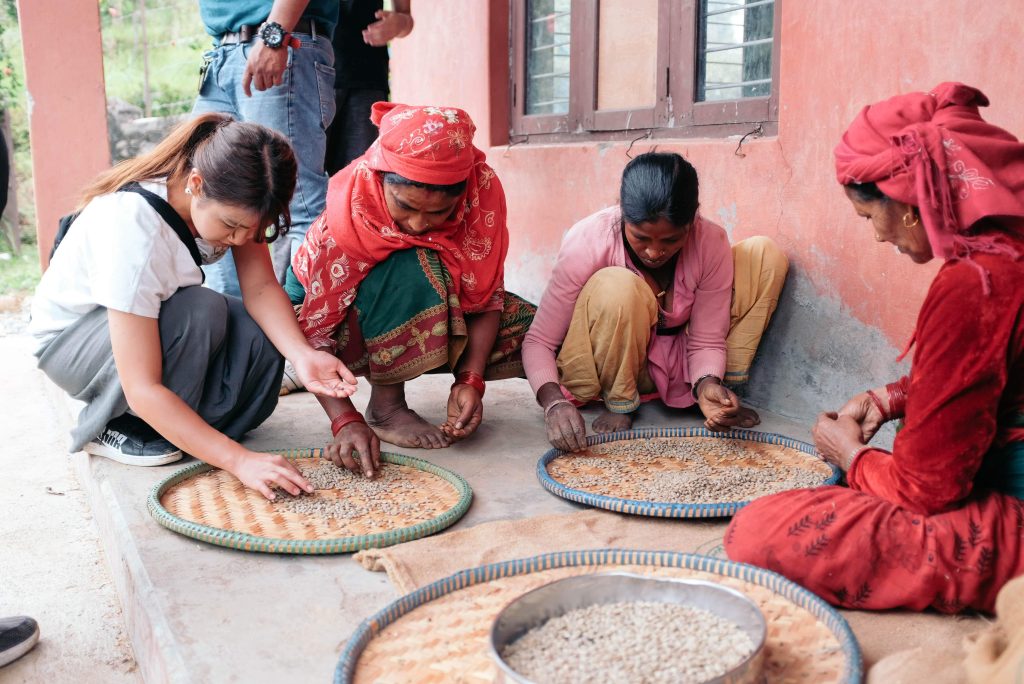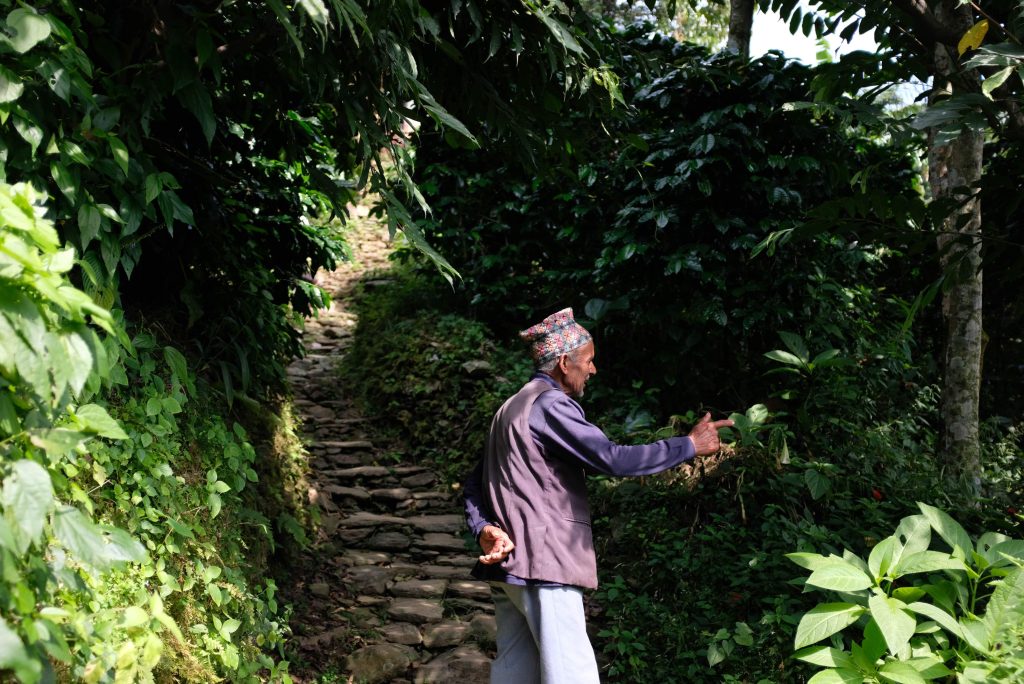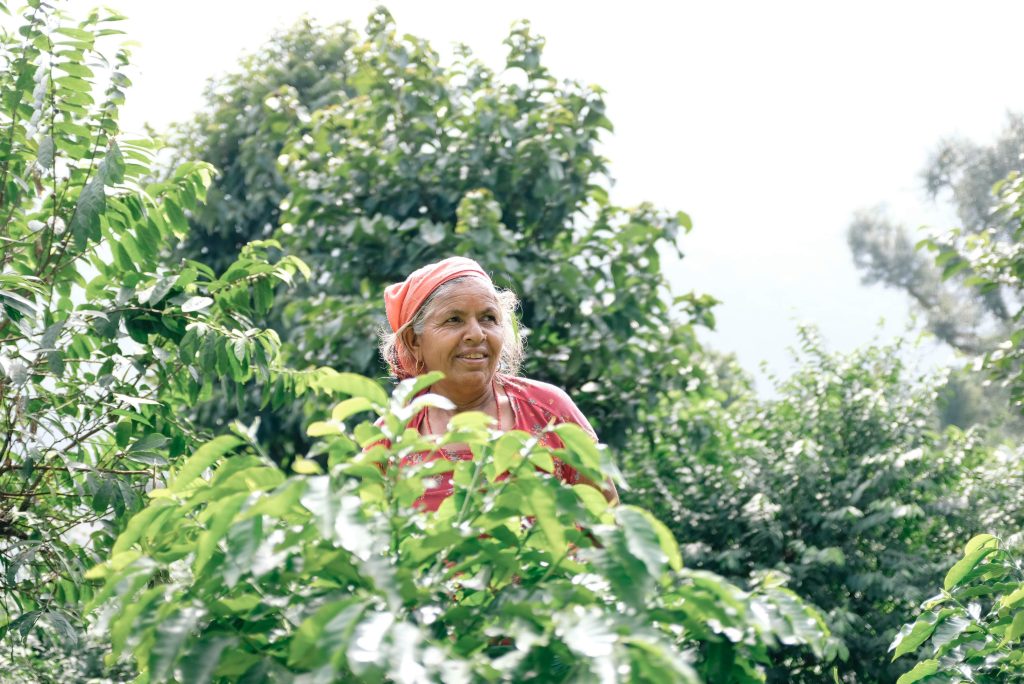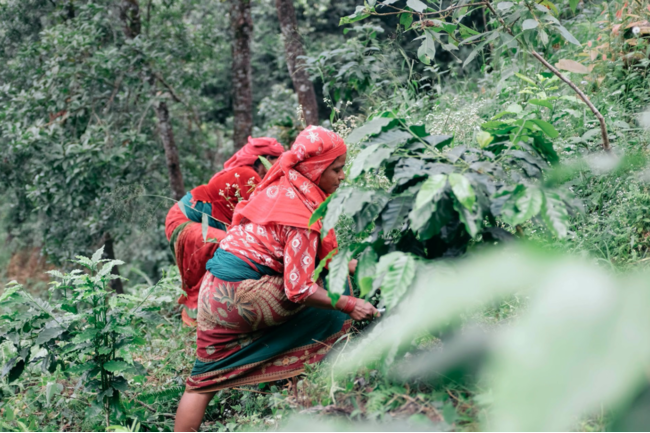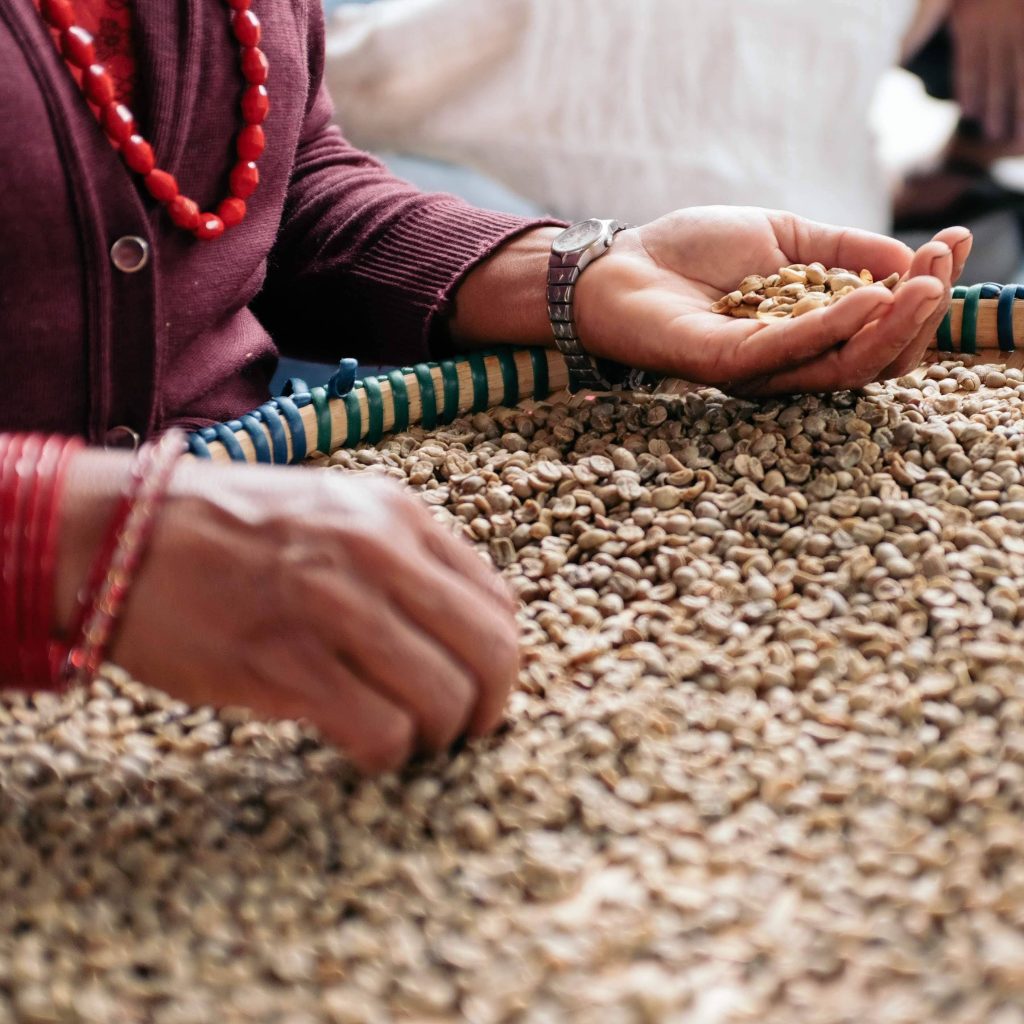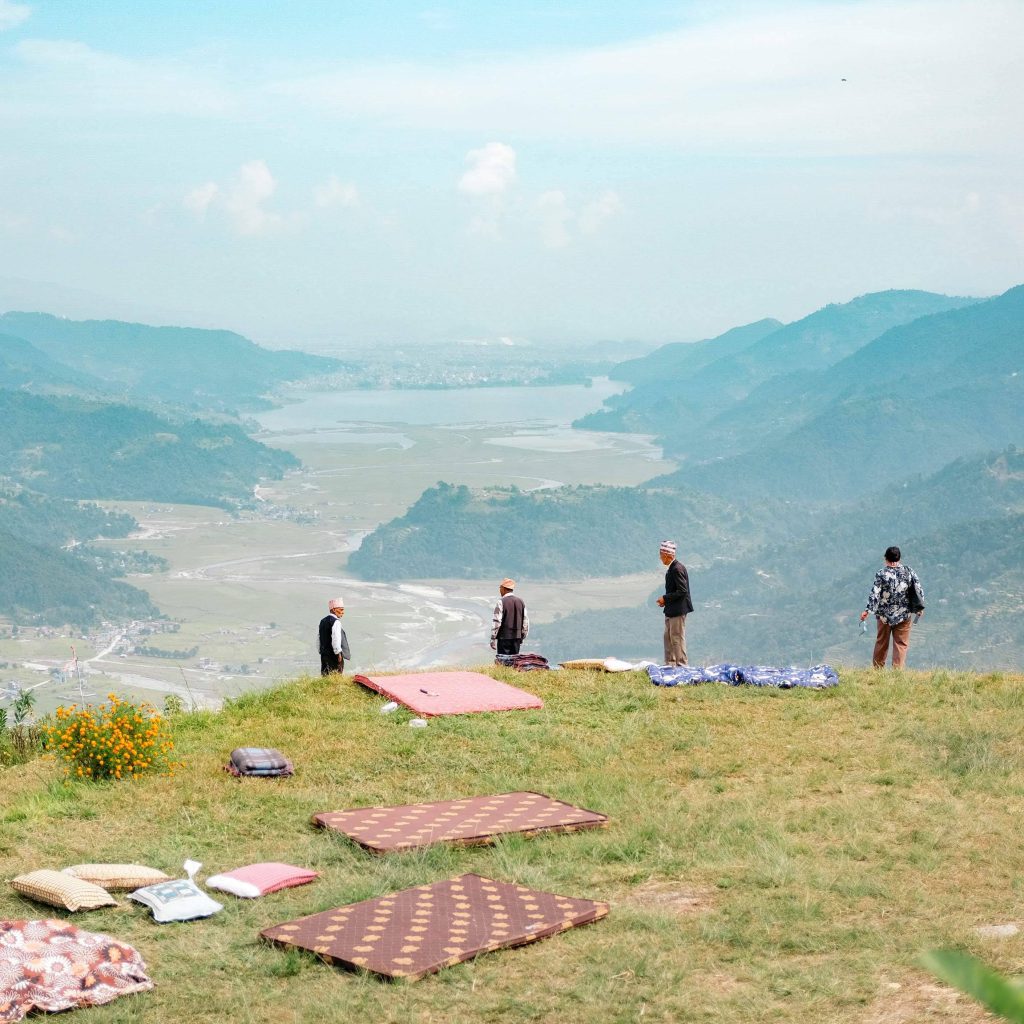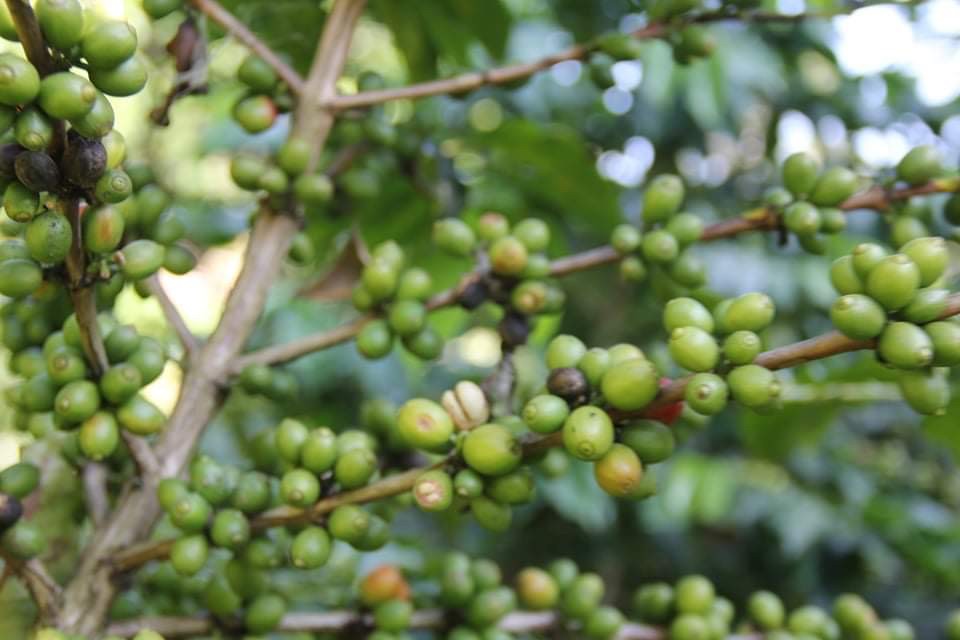
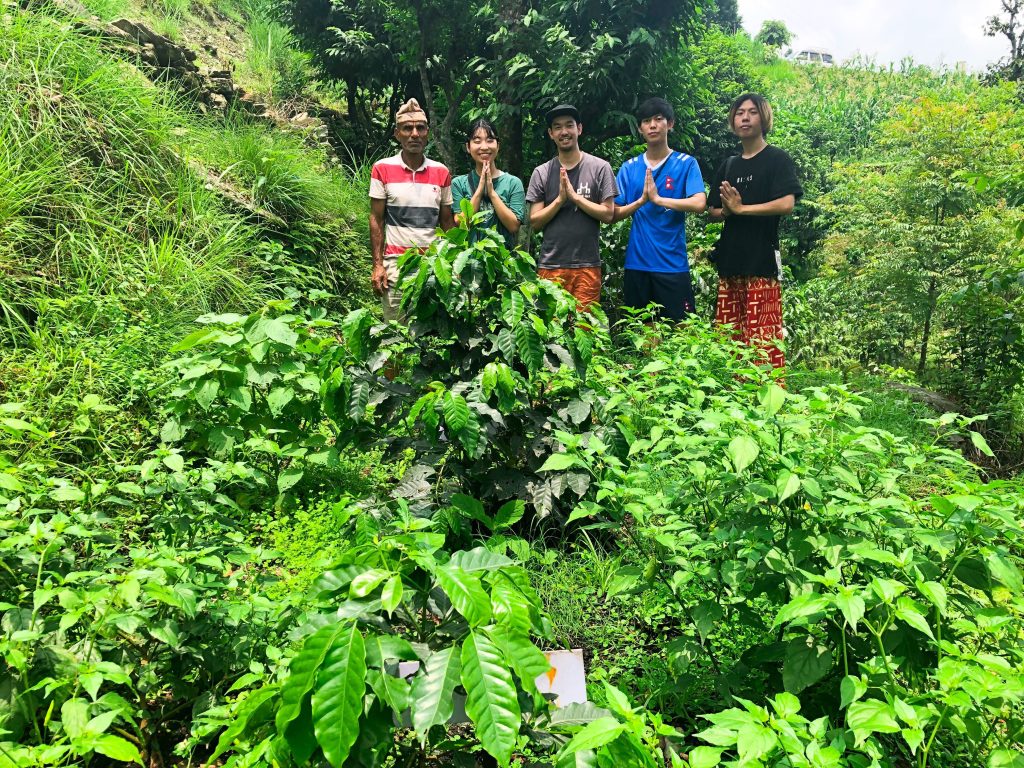
Normally, in major coffee-growing areas,
coffee trees are planted in “plantations”, where coffee trees are planted all over the field. However, the coffee trees in Harupang
are planted alongside vegetable fields or in the forest.
These methods are known as ‘agroforestry’ or ‘mixed planting’,
where the characteristics of both crops are utilised.
